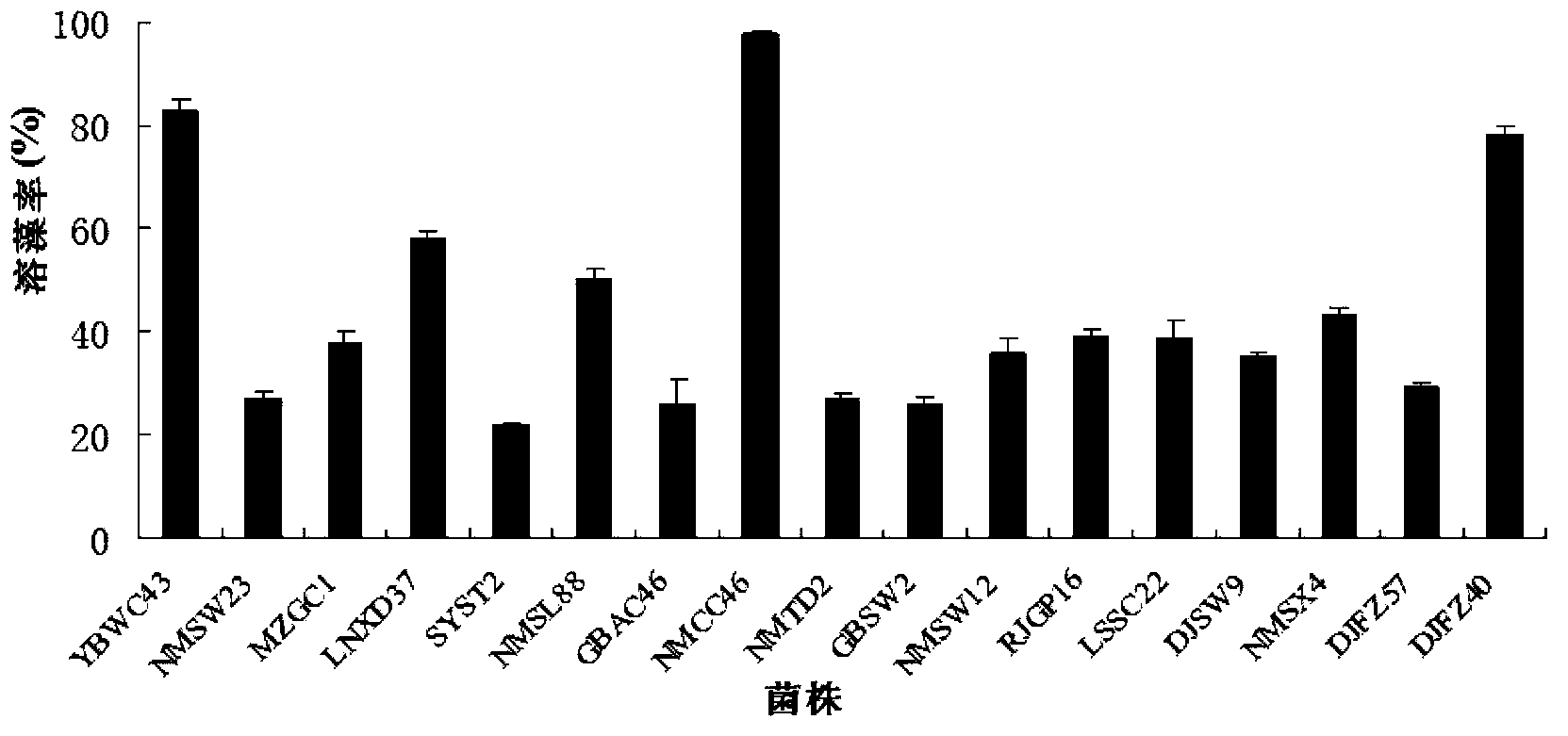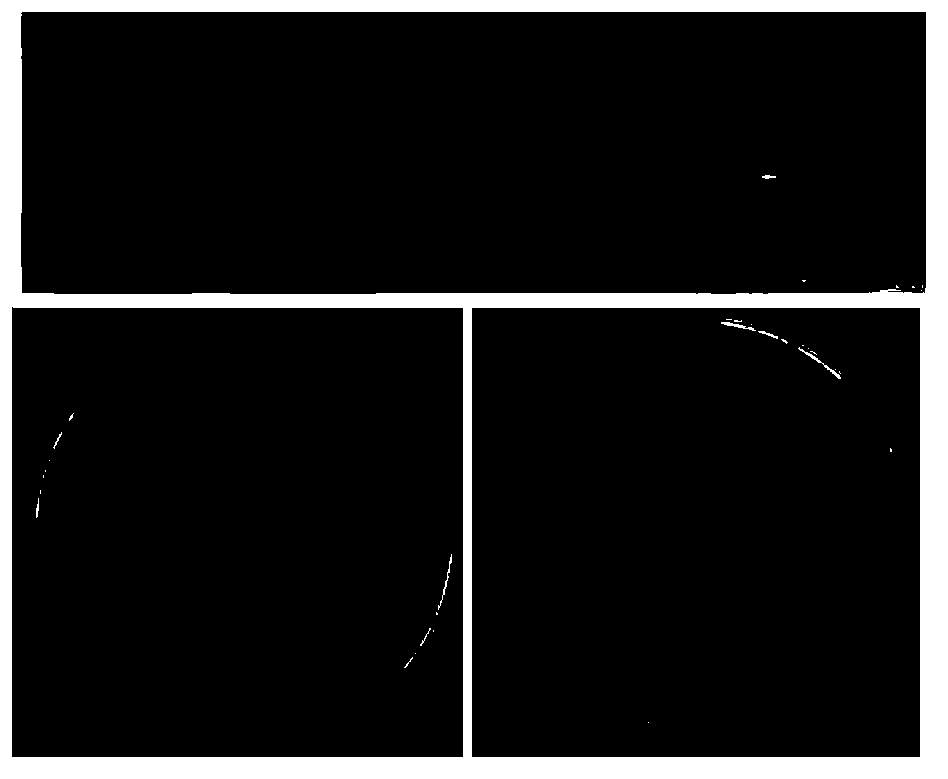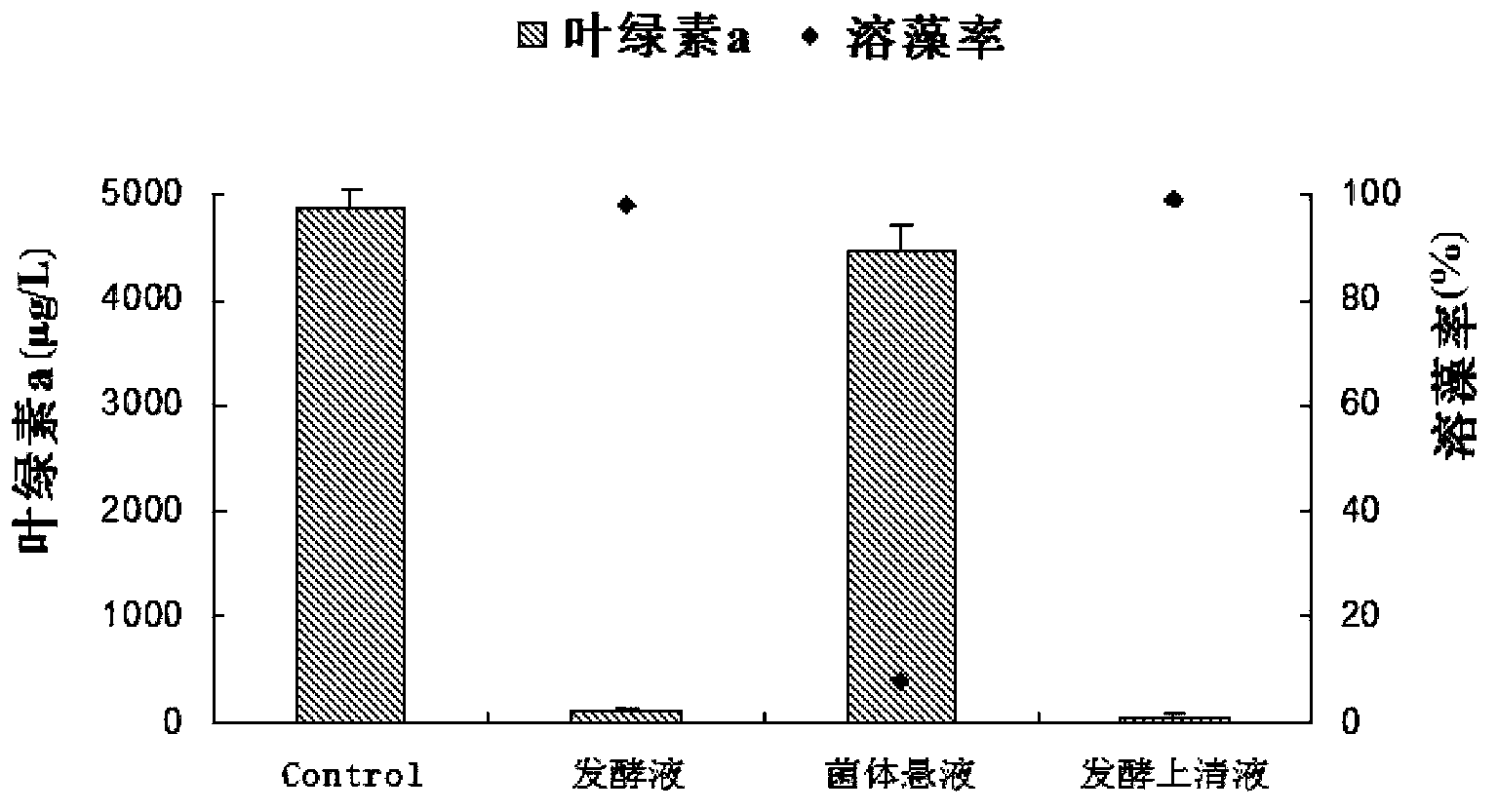Bacillus pumilus with efficient alga-lysing activity and application thereof
A Bacillus pumilus and algae-dissolving technology, applied in the field of water purification, can solve problems such as high cost and high difficulty, and achieve the effects of good environmental compatibility, great competitiveness, restoration control and governance
- Summary
- Abstract
- Description
- Claims
- Application Information
AI Technical Summary
Problems solved by technology
Method used
Image
Examples
Embodiment 1
[0025] Embodiment 1. has the screening of alginolytic activity bacillus strain
[0026] After activating 17 Bacillus strains with biocontrol ability isolated from soil samples in Tibet in the early stage of the laboratory, pick a single colony with a toothpick, inoculate it into 20ml LB medium, and culture it at 37°C and 200rpm for 24h; 200 μl was placed in 20 ml Landy medium, cultured and fermented at 30° C. with shaking at 200 rpm for 38 hours. Add 150 μl of fermentation broth to 30ml of Microcystis aeruginosa algae liquid in the logarithmic growth phase, and then place it in a light incubator with light intensity of 2500lx, temperature of 28°C, and light-dark ratio of 16h:8h for static cultivation. Shake 2 times. After 7 days, the chlorophyll-a content of each treatment was measured, the algae inhibition rate was calculated, and the statistical software of SPSS was used for analysis of variance statistics. The results show that: 17 Bacillus strains have different degrees ...
Embodiment 2
[0028] Embodiment 2. Exploration of the mechanism of inhibiting algae
[0029] The Bacillus fermentation liquid was centrifuged at 12000 rpm at 4°C for 10 min, and the supernatant was collected, which was the fermentation supernatant. Add sterilized water to the centrifuged bacteria to restore the original volume, namely the bacteria suspension. Inoculate 150 μL of fermentation broth, cell suspension, and fermentation supernatant into 30 mL of Microcystis aeruginosa algae liquid. The control is Landy medium, and the algae-dissolving experiment is carried out. After 7 days, the content of chlorophyll a is measured, and the algae inhibition rate is calculated. To compare the effects of different treatments of fermentation broth on Microcystis aeruginosa. Results: The algae inhibition rate of the fermentation supernatant was 98.0%, while that of the bacterial suspension was only 10.23% (see image 3 ). It indicated that Bacillus pumilus NMCC46 played the role of algae lysis ma...
Embodiment 3
[0030] Embodiment 3. Effects of different fermentation supernatant concentrations on the growth of Microcystis aeruginosa
[0031]In order to study the algicidal effect of different concentrations of Bacillus pumilus NMCC46 fermentation supernatant on Microcystis aeruginosa, and to find the best dosage of fermentation supernatant, we took 300μl, 150μl, 30μl, 15μl of fermentation supernatant and added them to 30ml In the Microcystis aeruginosa liquid, the final concentration was 1%, 5‰, 1‰, and 0.5‰ in four gradients, and the treatment without adding the fermentation supernatant was used as the control. The content of chlorophyll a was measured by 90% acetone extraction every 1 day, and their algalytic effect was judged by continuously observing the change of chlorophyll a content during 7 days of treatment. Results: The fermentation supernatant had a certain inhibitory effect on the growth of Microcystis aeruginosa at the tested concentrations. At the concentration of 1% and ...
PUM
 Login to View More
Login to View More Abstract
Description
Claims
Application Information
 Login to View More
Login to View More - R&D
- Intellectual Property
- Life Sciences
- Materials
- Tech Scout
- Unparalleled Data Quality
- Higher Quality Content
- 60% Fewer Hallucinations
Browse by: Latest US Patents, China's latest patents, Technical Efficacy Thesaurus, Application Domain, Technology Topic, Popular Technical Reports.
© 2025 PatSnap. All rights reserved.Legal|Privacy policy|Modern Slavery Act Transparency Statement|Sitemap|About US| Contact US: help@patsnap.com



